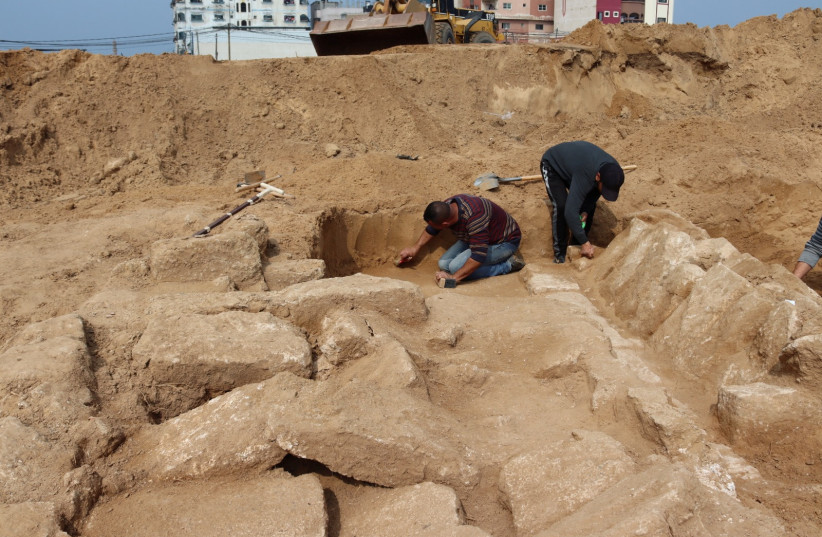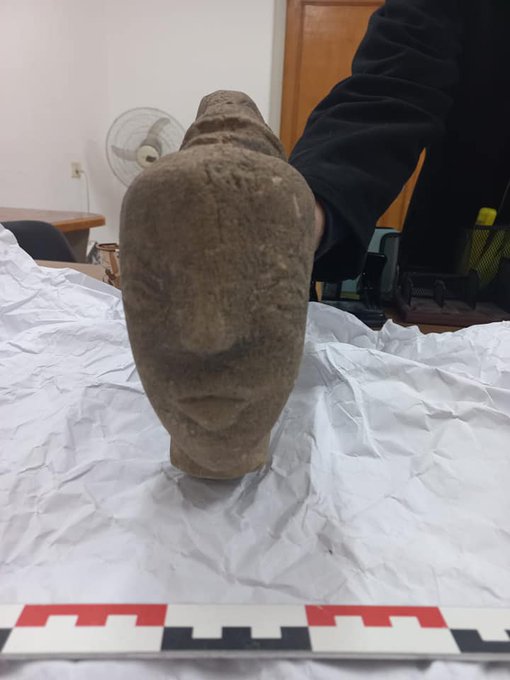 Farmer unearths face of 4,500 year old statue in Gaza
Farmer unearths face of 4,500 year old statue in Gaza
JUDITH SUDILOVSKY
Topped by snake crown, Palestinian archaeological authorities identify face with love and warrior goddess worshipped by numerous ancient Semitic cultures

A Palestinian farmer cultivating his land in city of Khan Younis in the Gaza Strip unearthed the head of an ancient sculpture which Palestinian archaeology authorities identified as Canaanite dating back to about 2500 BCE.
Wafa News Agency – English @WAFANewsEnglish
Canaanite sculpture dating back to about 2500 BC discovered in the Gaza Strip.
The head of the stone sculpture, which measures 22 cm tall (8.6 inches long), is carved out of limestone, but the body of the statue is missing, according to WAFA, the Palestinian National Authority news agency. The head is topped with a snake crown, a symbol of strength and invincibility used by the Canaanite gods, the agency noted.
The news agency said the sculpture represents the Canaanite goddess Anah, the goddess of love, beauty as well as of war according to Canaanite mythology.
The goddess is also known by the names of Anat, Anatu, Antit and Anath among other names. She was a major Semitic goddess worshipped in various incarnations.

She was also worshiped in Egypt and in Ugarit, an ancient port city in northern Syria, as well as in Cyprus and Mesopotamia.
A papyri account from Elephantine, Egypt — modern-day Aswan — mentions a goddess called Anat-Yahu who was worshipped in the temple dedicated to Yahweh. The temple was built by Jewish refugees of the Babylonian conquest of Judah. There, she was even described as the wife or consort of Yahweh.
She is also thought to be the precursor of the Greek goddess Athena, as divine warrior maidens.
Bar Ilan University professor of archaeology Aren Maeir noted that the statue face was unlike any other he had seen, making it difficult to verify its origins or age despite the statement quoted in the press from the Hamas Ministry of Tourism and Antiquities identifying it as Canaanite, he said.
“I don’t recognize the statue as anything I have seen before. I don’t recognize it so I don’t know what it is. It is hard to say from what period it is,” he said.
Regardless, he said, trying to connect the statue in any way to current modern-day politics is “irrelevant.”
“One statue here or there doesn’t change anything. There is nothing to this, basically it is a non-issue made into an issue because an article appeared with a picture. It is a little blip. I don’t even know if it is real, but if it is real, it is a very interesting find, but that is about it,” he said. “It could be something completely new or could have been brought from somewhere else.”
Zawartość publikowanych artykułów i materiałów nie reprezentuje poglądów ani opinii Reunion’68,
ani też webmastera Blogu Reunion’68, chyba ze jest to wyraźnie zaznaczone.
Twoje uwagi, linki, własne artykuły lub wiadomości prześlij na adres:
webmaster@reunion68.com

